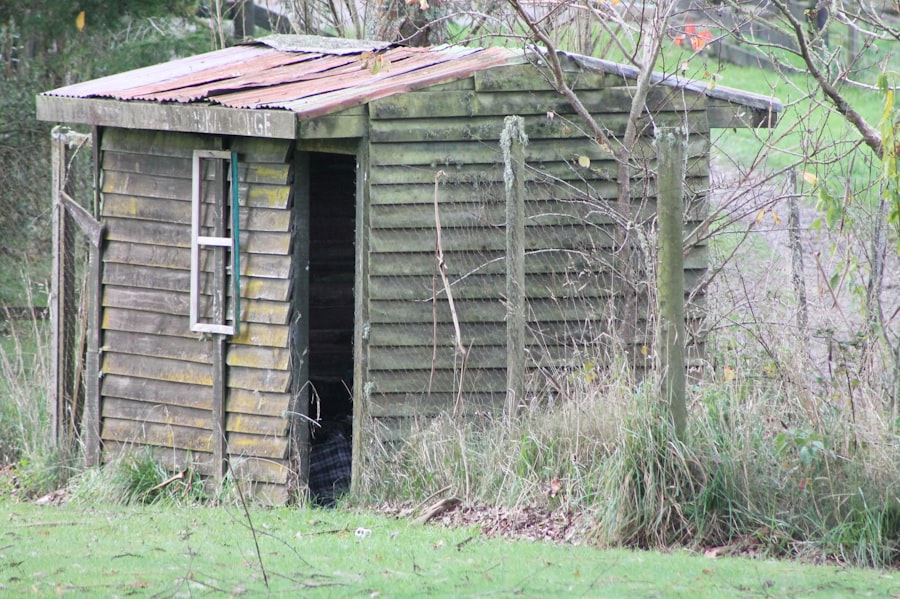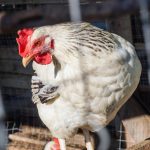Chickens and rattlesnakes are distinct species that often coexist in various regions worldwide. Chickens, domesticated fowl primarily raised for egg and meat production, have been utilized by humans for thousands of years. Rattlesnakes, on the other hand, are venomous reptiles characterized by their segmented tail rattle and potent bite.
Despite their apparent differences, these two animals have an intriguing ecological relationship, particularly in the context of pest management and predator deterrence. This article examines the innate behaviors of chickens and their role in controlling pests, as well as the characteristics and potential dangers posed by rattlesnakes to humans and livestock. Additionally, it investigates the efficacy of chickens as a natural deterrent against rattlesnakes, provides guidance on integrating chickens into rattlesnake prevention strategies, and explores alternative methods for managing and preventing rattlesnake encounters.
Table of Contents
- 1 The natural instincts of chickens and their role in pest control
- 2 The behavior of rattlesnakes and their potential threat to humans and livestock
- 3 The effectiveness of chickens in deterring rattlesnakes
- 4 Tips for incorporating chickens into a rattlesnake prevention strategy
- 5 Other methods for rattlesnake control and prevention
- 6 Conclusion and final thoughts on the benefits of using chickens to keep rattlesnakes away
- 7 FAQs
Key Takeaways
- Chickens are natural pest controllers and can help keep rattlesnakes away.
- Rattlesnakes pose a potential threat to humans and livestock due to their behavior and venomous bite.
- Chickens are effective in deterring rattlesnakes through their natural instincts and behavior.
- Incorporating chickens into a rattlesnake prevention strategy can be an effective and natural method.
- Other methods for rattlesnake control and prevention include habitat modification and professional removal services.
The natural instincts of chickens and their role in pest control
Foraging and Pest Control
Chickens are natural foragers with a keen eye for spotting insects, rodents, and other small pests. They have a strong instinct to scratch and peck at the ground in search of food, which makes them excellent at controlling populations of insects such as grasshoppers, crickets, and beetles. In addition to insects, chickens also have a taste for small rodents like mice and rats, making them valuable allies in pest control efforts on farms and in gardens.
Territorial Behavior and Predator Deterrent
Their constant movement and scratching behavior also disrupt the habitats of pests, making it difficult for them to establish themselves in an area. Furthermore, chickens are known to be territorial animals, and they will defend their territory against intruders, including snakes. This territorial behavior can be an effective deterrent against rattlesnakes and other predators that may pose a threat to the flock.
Early Warning System and Trainability
Chickens are also known for their vocalizations, which can serve as an early warning system for potential threats. When chickens sense danger, they will often emit loud clucks or squawks to alert the rest of the flock. This can be particularly useful in detecting the presence of rattlesnakes, as the sound of the snake’s rattle may not always be heard in time to prevent an encounter. In addition to their natural instincts, chickens can also be trained to recognize and avoid potential dangers, including snakes. By exposing them to harmless snake decoys or using scent deterrents, chickens can learn to associate the presence of snakes with negative experiences and avoid areas where snakes are likely to be found.
The behavior of rattlesnakes and their potential threat to humans and livestock

Rattlesnakes are a type of venomous pit viper that are found throughout the Americas, from Canada to Argentina. They are known for their distinctive rattle, which they use as a warning signal when they feel threatened. Rattlesnakes are ambush predators that rely on stealth and camouflage to capture their prey, which often includes small mammals such as mice, rats, and rabbits.
They are also known to consume birds and bird eggs, making them a potential threat to chickens and other domestic fowl. Rattlesnakes are most active during the warmer months, when they emerge from hibernation to hunt for food and mate. They are often found in grassy areas, rocky outcrops, and brushy habitats where they can easily conceal themselves while waiting for prey to pass by.
Rattlesnakes pose a potential threat to humans and livestock due to their venomous bite, which can cause severe pain, swelling, and tissue damage. In some cases, rattlesnake bites can be fatal if not treated promptly with antivenom. While rattlesnakes are generally shy and will avoid confrontation with humans or larger animals, they may strike if they feel threatened or cornered.
This can be a particular concern for farmers and ranchers who keep livestock, as rattlesnakes may be attracted to areas where food sources such as rodents or bird eggs are abundant. In addition to their venomous bite, rattlesnakes can also pose a threat to domestic fowl such as chickens, as they may view them as potential prey.
The effectiveness of chickens in deterring rattlesnakes
Chickens have been observed exhibiting behaviors that suggest they may be effective at deterring rattlesnakes from entering their territory. Their constant movement and scratching behavior disrupt the habitats of pests such as rodents, making it less likely that rattlesnakes will find a suitable hunting ground near the chicken coop or run. Chickens’ territorial nature also means that they will defend their territory against intruders, including snakes.
This territorial behavior can serve as a deterrent against rattlesnakes and other predators that may pose a threat to the flock. In addition to their natural instincts, chickens’ vocalizations can serve as an early warning system for potential threats. When chickens sense danger, they will emit loud clucks or squawks to alert the rest of the flock.
This can be particularly useful in detecting the presence of rattlesnakes, as the sound of the snake’s rattle may not always be heard in time to prevent an encounter. Furthermore, chickens can be trained to recognize and avoid potential dangers, including snakes. By exposing them to harmless snake decoys or using scent deterrents, chickens can learn to associate the presence of snakes with negative experiences and avoid areas where snakes are likely to be found.
This training can help reduce the risk of encounters between chickens and rattlesnakes, ultimately keeping both species safe from harm. While there is limited scientific research on the specific effectiveness of chickens in deterring rattlesnakes, anecdotal evidence from farmers and homesteaders suggests that chickens can play a valuable role in keeping rattlesnakes away from areas where they are kept.
Tips for incorporating chickens into a rattlesnake prevention strategy
For those who live in areas where rattlesnakes are common, incorporating chickens into a rattlesnake prevention strategy can be an effective way to keep these venomous snakes at bay. One of the first steps in using chickens as a deterrent against rattlesnakes is to ensure that the chicken coop and run are secure from potential predators. This includes using hardware cloth or wire mesh with small openings to prevent snakes from entering the enclosure.
Additionally, keeping the area around the coop clear of tall grasses, brush piles, and other potential hiding spots for snakes can help reduce the likelihood of encounters between chickens and rattlesnakes. Another important aspect of incorporating chickens into a rattlesnake prevention strategy is providing them with a safe environment that meets their basic needs. This includes providing adequate shelter, access to fresh water, and a balanced diet that meets their nutritional requirements.
By ensuring that chickens are healthy and well cared for, they will be better equipped to defend themselves against potential threats such as snakes. Additionally, providing chickens with opportunities for natural foraging can help keep pest populations in check, reducing the likelihood of attracting rattlesnakes to the area.
Other methods for rattlesnake control and prevention

Habitat Modification
In addition to using chickens as a deterrent, modifying the habitat around homes and livestock areas can make them less attractive to snakes. This can be achieved by removing debris such as woodpiles, brush piles, and rock piles where snakes may seek shelter. Keeping grassy areas mowed short can also help reduce hiding spots for snakes and make it easier to spot them from a distance.
Physical Barriers
Another method for rattlesnake control is the use of physical barriers such as snake fencing or snake-proofing existing fences. Snake fencing is typically made from fine mesh wire that extends into the ground to prevent snakes from burrowing underneath it. This type of fencing can be installed around chicken coops, gardens, or other areas where snakes are not welcome. Additionally, existing fences can be modified with hardware cloth or other materials to prevent snakes from entering or climbing over them.
Commercial Repellent Products
There are several commercial products available that claim to repel snakes using scent deterrents or electronic devices. While some people have reported success with these products, their effectiveness can vary depending on factors such as the species of snake present and the specific conditions of the area being treated. It’s important to research these products carefully and consider consulting with a professional pest control expert before investing in snake repellent products.
Conclusion and final thoughts on the benefits of using chickens to keep rattlesnakes away
In conclusion, chickens have natural instincts that make them effective at controlling pest populations and deterring potential predators such as rattlesnakes. Their constant movement and scratching behavior disrupt the habitats of pests while their territorial nature means they will defend their territory against intruders including snakes. Chickens’ vocalizations can serve as an early warning system for potential threats while they can also be trained to recognize and avoid potential dangers including snakes.
Incorporating chickens into a rattlesnake prevention strategy involves ensuring that the chicken coop and run are secure from potential predators while providing them with a safe environment that meets their basic needs. Other methods for rattlesnake control include modifying the habitat around homes and livestock areas to make them less attractive to snakes using physical barriers such as snake fencing or snake-proofing existing fences and using commercial products that claim to repel snakes using scent deterrents or electronic devices. Overall, using chickens as part of a comprehensive rattlesnake prevention strategy can be an effective way to keep these venomous snakes at bay while also reaping the benefits of natural pest control provided by these feathered friends.
By understanding the natural instincts of both chickens and rattlesnakes and taking proactive measures to create an environment that is less attractive to snakes, it is possible to coexist with these creatures in a way that minimizes potential conflicts and maximizes safety for both humans and animals alike.
If you’re interested in learning more about how chickens can help keep rattlesnakes away, check out this article on chicken coop portage. It discusses the benefits of having chickens in your yard and how they can help deter snakes and other pests.
FAQs
What is the relationship between chickens and rattlesnakes?
Chickens are known to be natural predators of snakes, including rattlesnakes. They will actively hunt and peck at snakes, making them a potential deterrent for rattlesnakes in the area.
Do chickens keep rattlesnakes away?
While chickens may not completely eliminate rattlesnakes from an area, their presence can help deter snakes from coming too close to their coop or the immediate vicinity. The noise and movement of the chickens can make the area less appealing to rattlesnakes.
How do chickens protect against rattlesnakes?
Chickens are known to be territorial and will defend their space against potential threats, including snakes. Their natural behavior of pecking and scratching can make it difficult for snakes to approach, and their presence can alert humans to the presence of a rattlesnake.
Are there any downsides to using chickens as a deterrent for rattlesnakes?
While chickens can help deter rattlesnakes, they may also be at risk of being bitten by a rattlesnake if they encounter one. It’s important to take precautions to protect both the chickens and humans from potential snake encounters.
Meet Walter, the feathered-friend fanatic of Florida! Nestled in the sunshine state, Walter struts through life with his feathered companions, clucking his way to happiness. With a coop that’s fancier than a five-star hotel, he’s the Don Juan of the chicken world. When he’s not teaching his hens to do the cha-cha, you’ll find him in a heated debate with his prized rooster, Sir Clucks-a-Lot. Walter’s poultry passion is no yolk; he’s the sunny-side-up guy you never knew you needed in your flock of friends!







